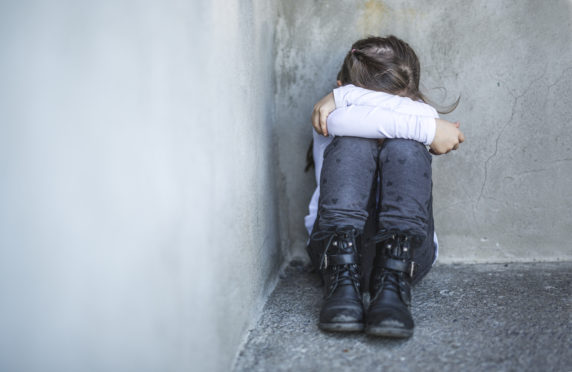
Meeting Scotland’s child poverty targets could cost almost £1 billion a year – although a report has said that making more “modest” payments of just £10 a week could make a difference to struggling families.
But with poverty levels rising, ministers have been told there needs to be a “clear sense of urgency” in tackling the problem.
Think tanks IPPR Scotland and the Joseph Rowntree Foundation (JRF) combined to say plans for a new benefit to help low-income families could be a “golden opportunity” in the fight against child poverty – which affects 240,000 youngsters across the country.
The Scottish Government has already committed to bringing in an income supplement for low-income families.
But the think tanks said the pledge to “make progress” on this by 2022 was not fast enough.
A new briefing paper from the organisations insisted that payments “should begin soon rather than in several years’ time, even if this means starting on a smaller scale and expanding”.
The organisations insisted: “We can’t put children’s lives on hold, and we must act quickly to stem the tide.”
They stated: “Scotland is at a precipice. Either it allows child poverty to rise as it is expected to do across the UK, or it uses the powers the Scottish Parliament now has to take a different path.
“Social security is one of the most powerful and direct tools that the Scottish Parliament has. It is vital that the Scottish Government use it to its best effect.”
IPPR Scotland has already warned that without action, 50,000 more youngsters will be forced to live in poverty by 2023-24.
At the same time, the Scottish Government has passed legislation committing ministers to reducing the proportion of youngsters in relative poverty to 18% by then.
To achieve that, the report estimated about 100,000 children would have to be removed from poverty – saying this would require making payments of up to £150 a month to those in need, at a cost of £950 million a year.
Payments of up to £50 a month would lift about 45,000 youngsters from poverty, at a cost of around £390 million a year, it calculated, while increasing payments to up to £100 a month would take 65,000 children out of poverty but would cost £600 million a year.
The think tanks said poorer families had told them “even a modest increase – of £10 a week per child – would begin to make a difference to family budgets, for example allowing them to buy better food, replace children’s basic clothing and say yes to occasional school trips or birthday activities”.
Larger payments “could have even more significant impacts on children’s lives”, the report added.
Interim payments for the family income supplement could be in place before April 2021 “if decisions are made soon”, the organisations said.
Meanwhile legislation for a low-income family supplement could be in place by April 2021, before the next Holyrood elections, they stated, adding that “avoiding the uncertainty that a Scottish election could bring to the delivery of the income supplement is advantageous”.
To achieve this, they said there would need to be a “clear statement of intent” from the Scottish Government soon.
And with ministers due to deliver a progress report on the Tackling Child Poverty Delivery Plan by the end of June, they said the Government had an “opportunity to set a budget and timeline for legislation”.
Communities Secretary Aileen Campbell said the report “highlights the damaging impact of the UK Government’s welfare cuts on families and the complexities involved in introducing an income supplement”.
She added: “Our first Tackling Child Poverty Delivery Plan published last year outlines the range of actions to be taken to 2022 and is backed by a £50 million fund.
“Our actions include working towards development of a new income supplement and we have involved stakeholders, including JRF/IPPR, in that work.
“A one-year progress report on the delivery plan will be given to Parliament this month.”

Enjoy the convenience of having The Sunday Post delivered as a digital ePaper straight to your smartphone, tablet or computer.
Subscribe for only £5.49 a month and enjoy all the benefits of the printed paper as a digital replica.
Subscribe